Maintaining a saltwater aquarium can seem like a daunting task, but with the right knowledge and tools, it can be a rewarding and enjoyable experience. From choosing the right tank size to keeping the water parameters balanced, there are many important aspects to consider when caring for a saltwater aquarium. In this guide, we will cover everything you need to know about maintaining a saltwater aquarium and ensuring the health and longevity of your aquatic pets.
1. Choosing the Right Tank Size for Your Saltwater Aquarium
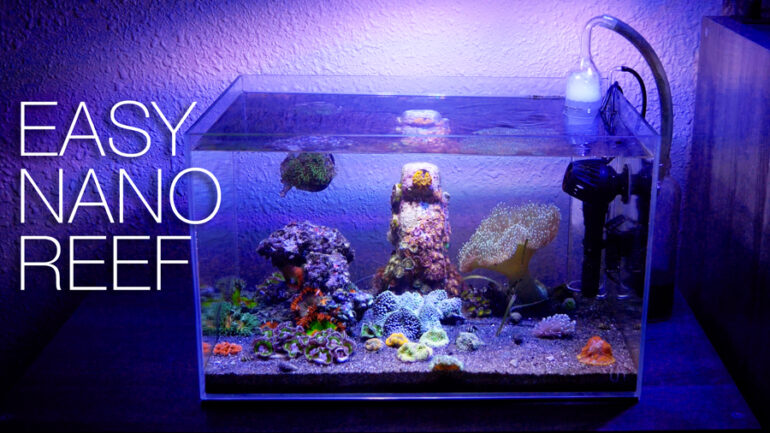
A. Determining the Ideal Tank Size
The first step in maintaining a saltwater aquarium is choosing the right tank size. This will depend on the type and number of fish, as well as the equipment and decorations you plan to have in the tank. As a general rule, a larger tank is always better, as it provides more stable water conditions and allows for a greater variety of fish and corals.
There are various guidelines for how many fish you can keep per gallon of water, but these should only be used as a rough estimate. The best approach is to research the specific needs of the fish you plan to keep and choose a tank size that can accommodate them comfortably. It is also important to consider the dimensions of the tank, as some fish may require more horizontal swimming space while others prefer a taller tank for vertical swimming.
B. Setting Up the Tank Properly
Once you have chosen the ideal tank size, it is important to set it up properly to create a healthy environment for your fish. Here are some key tips to follow:
- Rinse all equipment thoroughly before use to remove any dust or debris.
- Use a high-quality aquarium salt mix to create the right salinity level for your fish (usually between 1.020-1.024 specific gravity).
- Add live rock, which serves as a natural filter and provides hiding places for fish, to the tank. Aim for approximately 1-2 pounds of live rock per gallon of water.
- Use a quality protein skimmer to remove organic waste from the water.
- Allow the tank to cycle for at least four weeks before adding any fish to ensure that beneficial bacteria have established in the tank.
C. Maintaining Water Parameters
After setting up the tank, it is crucial to regularly monitor and maintain the water parameters. This includes temperature, pH, salinity, and nitrate levels. Invest in a high-quality test kit and check these parameters once or twice a week. Here are some tips for keeping these levels in check:
- Keep the temperature between 75-78°F for most saltwater fish.
- Maintain a pH between 8.2-8.4 for a stable environment.
- Check salinity levels regularly and make adjustments as needed using a refractometer.
- Keep nitrate levels below 10 ppm by performing weekly water changes of 10-20%.
2. Proper Feeding Techniques for Saltwater Fish

A. Choosing the Right Food for Your Fish
Proper nutrition is essential for maintaining the health of your saltwater fish. Different species have different dietary requirements, so it is important to do research and choose the right food for your specific fish. Some common types of food for saltwater fish include frozen or live foods, flakes, and pellets. It is also recommended to add vitamin and mineral supplements to their diet.
B. Feeding Schedule
It is important to establish a feeding schedule for your fish and stick to it consistently. Overfeeding can lead to dirty water and health problems for your fish, while underfeeding can cause malnutrition. As a general rule, feed your fish small amounts 2-3 times a day, only giving them as much as they can consume in 2-3 minutes.
C. Proper Feeding Techniques
When feeding your saltwater fish, there are a few important techniques to follow:
- Thaw frozen food before feeding to prevent bloating and digestive issues.
- Use a feeding ring or target feeding to ensure that all fish receive adequate nutrition and reduce waste.
- Remove any uneaten food after 10-15 minutes to maintain water quality.
3. Maintaining the Health of Your Aquarium's Inhabitants

A. Identifying Common Health Issues
Just like any other pet, saltwater fish can become ill and develop health problems. Some common health issues for saltwater fish include ich (white spots), fin rot, and parasitic infections. It is important to be familiar with the signs and symptoms of these health problems so you can address them promptly and effectively.
B. Preventative Measures
The best way to maintain your fish's health is to prevent any potential health issues from arising. Here are some key preventative measures to take:
- Quarantine new fish for at least two weeks before introducing them to the main tank.
- Regularly clean and maintain equipment to prevent harmful bacteria and parasites from thriving.
- Avoid overcrowding the tank, as this can cause stress and lead to health problems.
- Keep up with regular water changes to maintain good water quality.
C. Treating Common Health Issues
If you do encounter a health issue in your saltwater aquarium, prompt treatment is crucial. There are various medications and treatments available to address specific health problems, but it is important to research and consult with an expert before using them. Additionally, make sure to follow dosage instructions carefully and remove any activated carbon from the filter before adding medication.
4. Creating and Maintaining a Beautiful Reef Tank
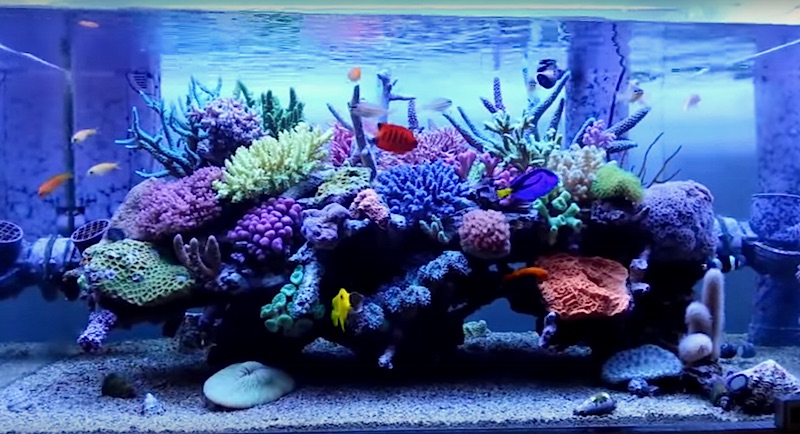
A. Understanding the Needs of Corals
Reef tanks are a popular choice for saltwater aquarium enthusiasts, as they allow for the addition of colorful and diverse coral species. However, keeping corals healthy and thriving requires specific care and attention. Here are some key factors to consider when maintaining a reef tank:
- Lighting: Corals require specific lighting conditions, typically in the blue spectrum, to survive and thrive.
- Water Flow: Adequate water flow is crucial for corals, as it brings oxygen, food, and removes waste.
- Water Parameters: As mentioned before, maintain stable water parameters to ensure the health of your corals.
B. Choosing the Right Corals
There are many different types of coral to choose from, and it is important to research and choose the ones that are suitable for your tank's size and lighting. Some common types of corals include hard corals (such as stony or brain corals) and soft corals (such as leather or mushroom corals).
C. Maintaining a Clean and Healthy Reef Tank
To maintain a beautiful and thriving reef tank, regular maintenance is crucial. Here are some tips to keep in mind:
- Regularly clean algae and debris from the tank walls and rocks.
- Test water parameters frequently and make adjustments as needed.
- Prune corals regularly to prevent overcrowding and promote growth.
- Use a protein skimmer to remove organic waste from the water.
5. Essential Equipment for Maintaining a Saltwater Aquarium

A. Filtration Systems
Filtration is essential for keeping the water in your aquarium clean and removing harmful toxins. There are various types of filtration systems available, including mechanical, biological, and chemical filters. It is recommended to use multiple types of filters to create a more thorough cleaning system.
B. Protein Skimmers
As mentioned before, protein skimmers are an essential piece of equipment for maintaining a saltwater aquarium. They use air bubbles to remove organic waste from the water, which can help prevent health issues and keep the water clean and clear.
C. Water Pumps and Powerheads
Water pumps and powerheads are used to create water flow in the tank, which is crucial for the health of fish and corals. These also help distribute nutrients and oxygen throughout the tank.
6. Tips for Maintaining a Low-Maintenance Saltwater Aquarium
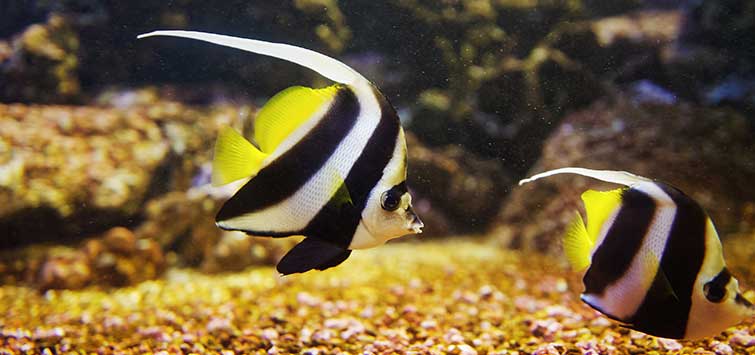
A. Choosing Low-Maintenance Fish and Corals
If you are looking for a low-maintenance saltwater aquarium, consider choosing fish and corals that require minimal care and attention. Some hardy and easy-to-care-for options include clownfish, damselfish, and mushroom corals.
B. Automating Equipment
Investing in automated equipment, such as automatic feeders or timers for lights and pumps, can help simplify the maintenance process and ensure consistency in caring for your aquarium.
C. Regular Maintenance Schedule
Creating a regular maintenance schedule for your saltwater aquarium will help you stay on top of tasks and prevent any potential problems. This should include weekly water changes, testing water parameters, and cleaning equipment.
FAQs
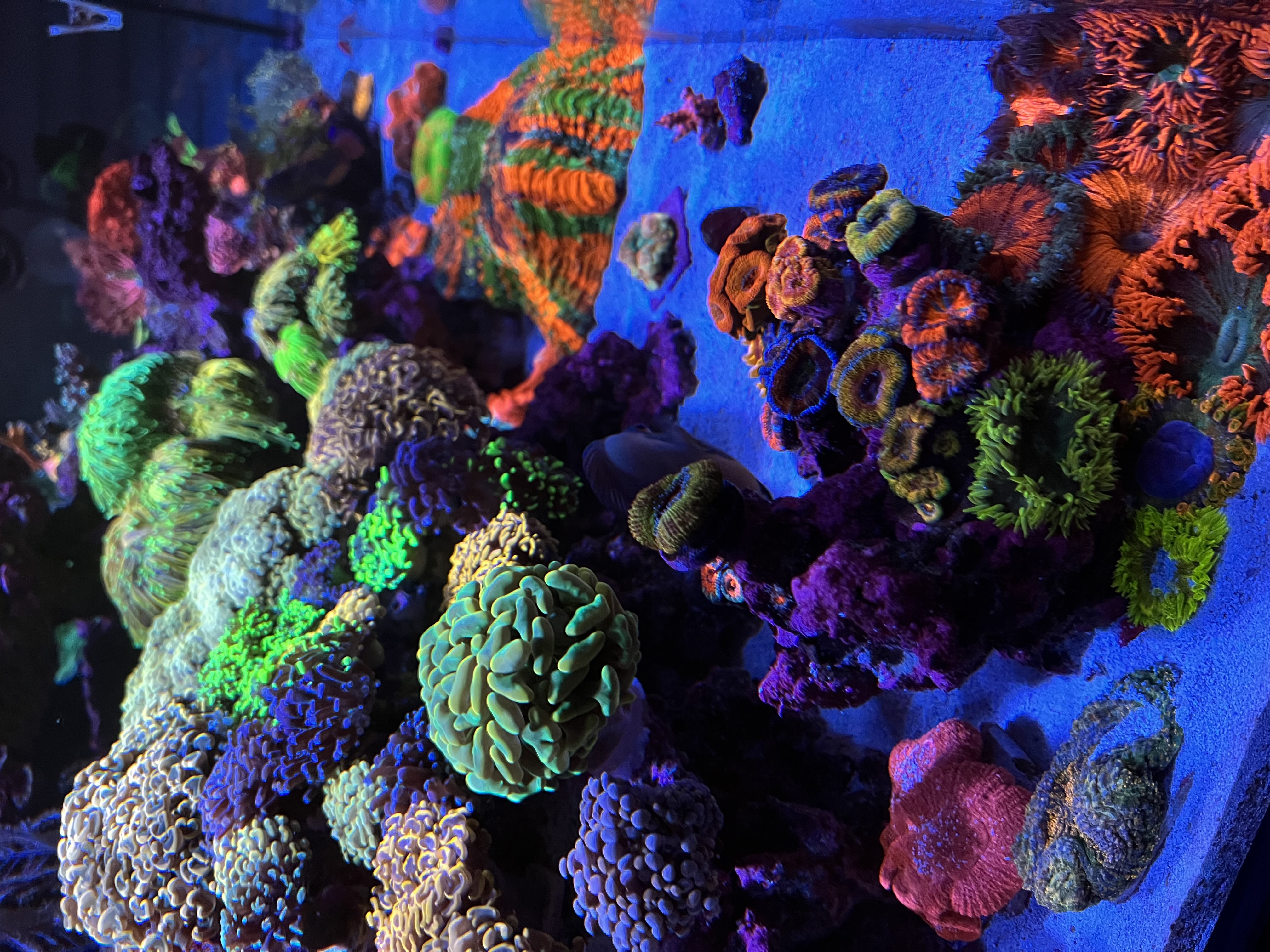
What is the ideal salinity level for a saltwater aquarium?
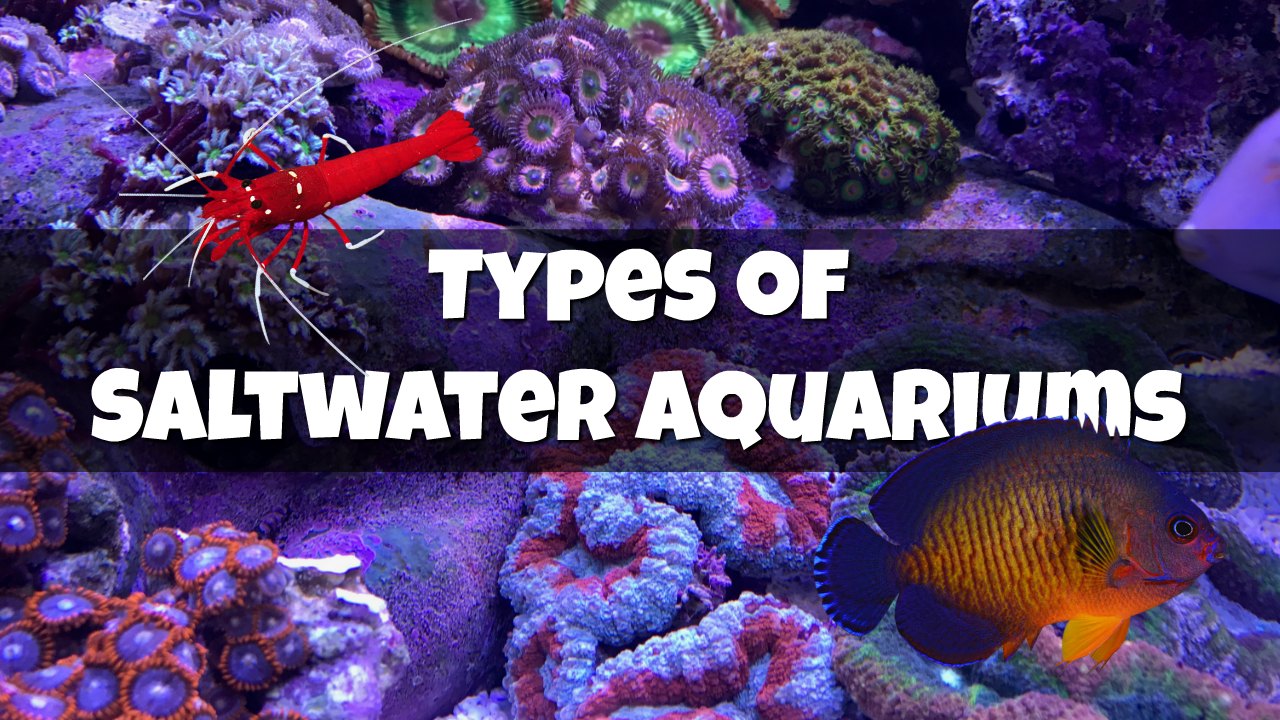
The ideal salinity level for a saltwater aquarium is between 1.020-1.024 specific gravity.
How often should I feed my saltwater fish?
Saltwater fish should be fed small amounts 2-3 times a day, only giving them as much as they can consume in 2-3 minutes.
Can I use tap water for my saltwater aquarium?
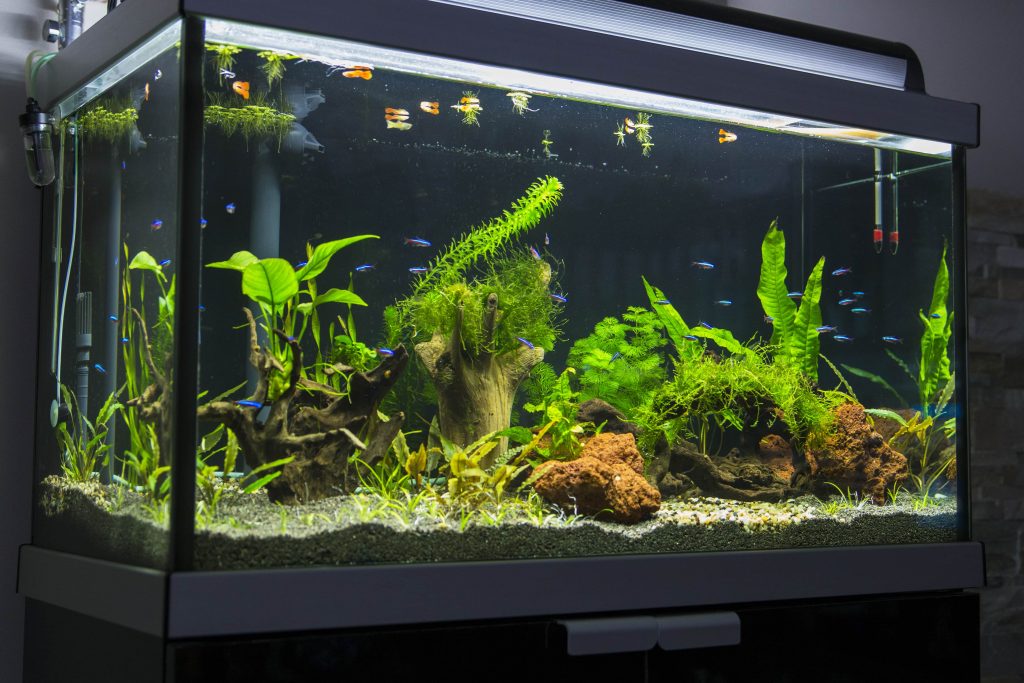
No, tap water contains chemicals and impurities that can harm fish and corals. It is recommended to use a high-quality aquarium salt mix to create the right salinity level for your tank.
How do I know if my fish is sick?
Signs of illness in saltwater fish can include a loss of appetite, changes in behavior, and physical symptoms such as discoloration or white spots. Regular observation and research on the specific needs of your fish can help you identify potential health issues early on.
How often should I clean my aquarium?
Regular maintenance is crucial for a healthy saltwater aquarium. This includes weekly water changes, cleaning algae and debris from the tank walls and rocks, and testing and adjusting water parameters as needed.
Conclusion
Maintaining a saltwater aquarium requires dedication and attention to detail, but the end result of a thriving and beautiful aquatic environment is well worth the effort. By choosing the right tank size, following proper feeding techniques, and regularly monitoring and maintaining water parameters, you can create a healthy and happy home for your underwater pets. With the tips and information provided in this guide, you are now equipped with the knowledge to maintain a successful saltwater aquarium.



